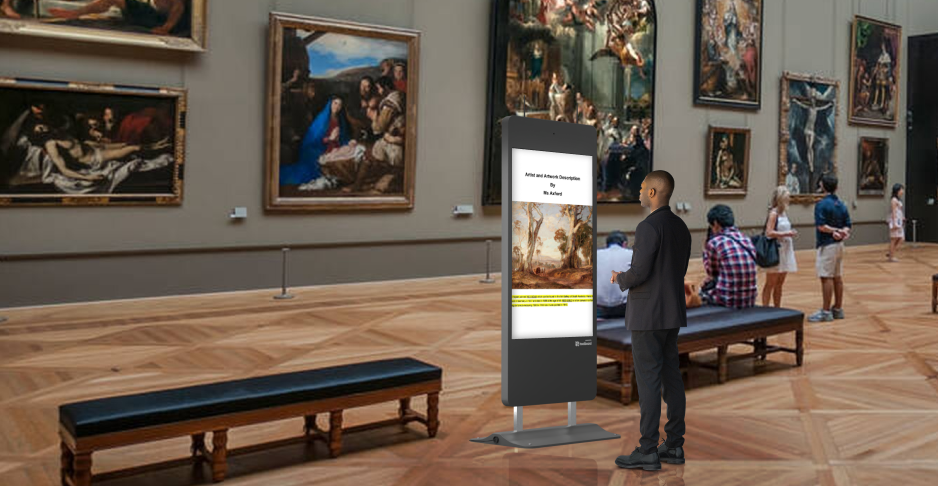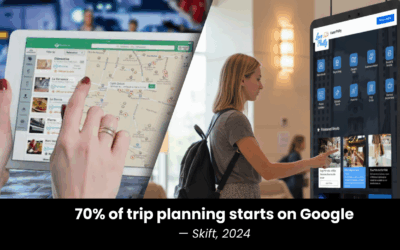Okay, people, let’s have a serious heart-to-heart about those dusty old brochures and posters gathering cobwebs in the corner. You know, the ones with the faded photos and outdated information? Yeah, those. They’re about as effective as a rotary phone in a smartphone world.
In today’s age of instant gratification and digital overload, traditional visitor information methods are simply not cutting it. Visitors crave engaging, personalized experiences, and static signage just doesn’t deliver. It’s time to face facts: static signage is dead.
The Rise of the Interactive Kiosk
But fear not, there’s a new sheriff in town: the interactive kiosk. These sleek, tech-savvy displays are like the superheroes of visitor engagement, swooping in to save the day with their captivating visuals, user-friendly interfaces, and data-driven superpowers.
Think touchscreens, 3D graphics, augmented reality experiences, and even gesture-based controls. These kiosks aren’t just informative; they’re downright fun to use. And that’s why they’re popping up everywhere, from airports and hotels to museums and theme parks.
But don’t just take my word for it. The numbers speak for themselves:
- A study by Kiosk Marketplace found that a whopping 70% of customers prefer interactive kiosks over traditional customer service methods. That’s right, people would rather poke a screen than talk to a human! (Okay, maybe not always, but you get the point.)
- Research by Grand View Research predicts that the global interactive kiosk market will reach a mind-boggling $42.8 billion by 2025. That’s enough to buy a small island nation! (Or a really, really nice yacht.)
- A survey by Harris Poll revealed that 68% of consumers believe interactive kiosks make their experiences more enjoyable. Who doesn’t love a bit of fun and excitement?
So, what exactly makes interactive kiosks so amazing? Why are they the future of visitor engagement? Let’s dive deeper:
- Engagement is King
Remember those boring old brochures? You’d glance at them for a few seconds, maybe take a photo of a map, and then promptly forget they ever existed. Not so with interactive kiosks.
These bad boys are designed to grab your attention and keep you hooked. They invite users to explore, discover, and engage with information in a way that static displays simply can’t.
Imagine a visitor at a museum, not just reading a plaque about a dinosaur skeleton, but actually interacting with a 3D model, rotating it, zooming in on details, and even watching it come to life through augmented reality. That’s the power of engagement.
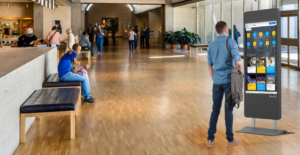
- Personalization is the Name of the Game
In today’s world, everyone wants to feel special. We want things tailored to our individual needs and preferences. And that’s exactly what interactive kiosks deliver.
They allow visitors to personalize their experiences, choosing the information they want, in the language they prefer. Want to find the nearest coffee shop? Done. Need directions to the restroom? No problem. Want to learn more about the history of the building you’re standing in? Go for it.
This level of customization leads to greater satisfaction and a more memorable experience. It’s like having a personal concierge at your fingertips.
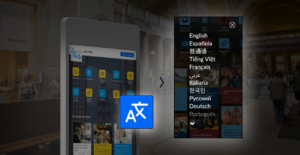
- Data is the New Gold
Okay, so we’ve established that interactive kiosks are engaging and personalized. But they’re also data-gathering ninjas.
Every tap, swipe, and click is tracked, providing valuable insights into visitor behavior, preferences, and demographics. This data can be used to:
- Improve services: Identify popular attractions, peak usage times, and areas for improvement.
- Tailor marketing campaigns: Target specific demographics with personalized messages and offers.
- Make data-driven decisions: Optimize operations, allocate resources effectively, and measure the ROI of marketing initiatives.
In other words, interactive kiosks don’t just enhance the visitor experience; they also provide valuable intelligence that can help organizations make better decisions.
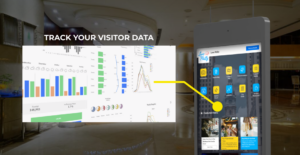
- Efficiency is Key
Nobody likes to wait in line. Whether you’re at the airport, the hotel check-in desk, or the theme park ticket booth, long lines are a major buzzkill.
Interactive kiosks can help alleviate this pain point by automating tasks like check-in, ticketing, and information retrieval. This frees up staff to focus on more complex tasks and provides a faster, more efficient experience for visitors.
Think about it: would you rather wait in line for 20 minutes to talk to a human, or spend 5 minutes interacting with a kiosk and be on your way? The answer is pretty clear.
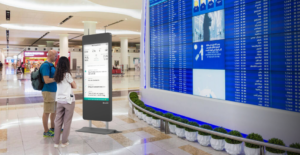
Case Studies: From Static to Dynamic
Still not convinced? Let’s take a look at a few real-world examples of how interactive kiosks are transforming visitor engagement:
- The Louvre Museum
The Louvre, one of the world’s most visited museums, uses interactive kiosks to provide visitors with information about exhibits, artist biographies, and even audio guides. This allows visitors to explore the museum at their own pace and personalize their experience.
Imagine a visitor standing in front of the Mona Lisa, not just admiring the painting, but also using a kiosk to learn about its history, the artist’s life, and the symbolism behind the artwork. That’s a whole new level of engagement.
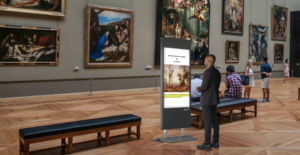
- Dubai International Airport
Dubai Airport, a global travel hub, uses interactive kiosks to provide wayfinding assistance, flight information, and even language translation services. This helps travelers navigate the airport with ease and reduces stress.
Imagine a traveler arriving in a foreign country, feeling lost and confused. But instead of struggling to find their way, they simply use a kiosk to get directions, translate signs, and find their gate. That’s a much more welcoming and efficient experience.
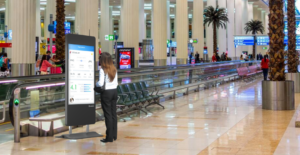
- Marriott Hotels
Marriott Hotels uses interactive kiosks to streamline the check-in and check-out process, allowing guests to bypass the front desk and access their rooms more quickly. This improves guest satisfaction and frees up staff to focus on other tasks.
Imagine arriving at a hotel after a long journey, only to be greeted by a long line at the check-in desk. Not exactly the relaxing start to your vacation you were hoping for. But with a self-service kiosk, you can check in, get your room key, and be on your way in minutes.
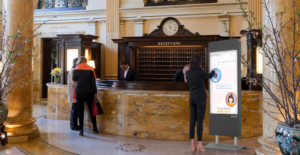
The Future is Interactive
The writing is on the wall (or should I say, the touchscreen?). Interactive kiosks are the future of visitor engagement. They offer a dynamic, personalized, and data-driven approach that’s simply more effective than traditional methods.
So, if you’re still clinging to those dusty brochures and outdated posters, it’s time to embrace the future. Your visitors will thank you for it.

